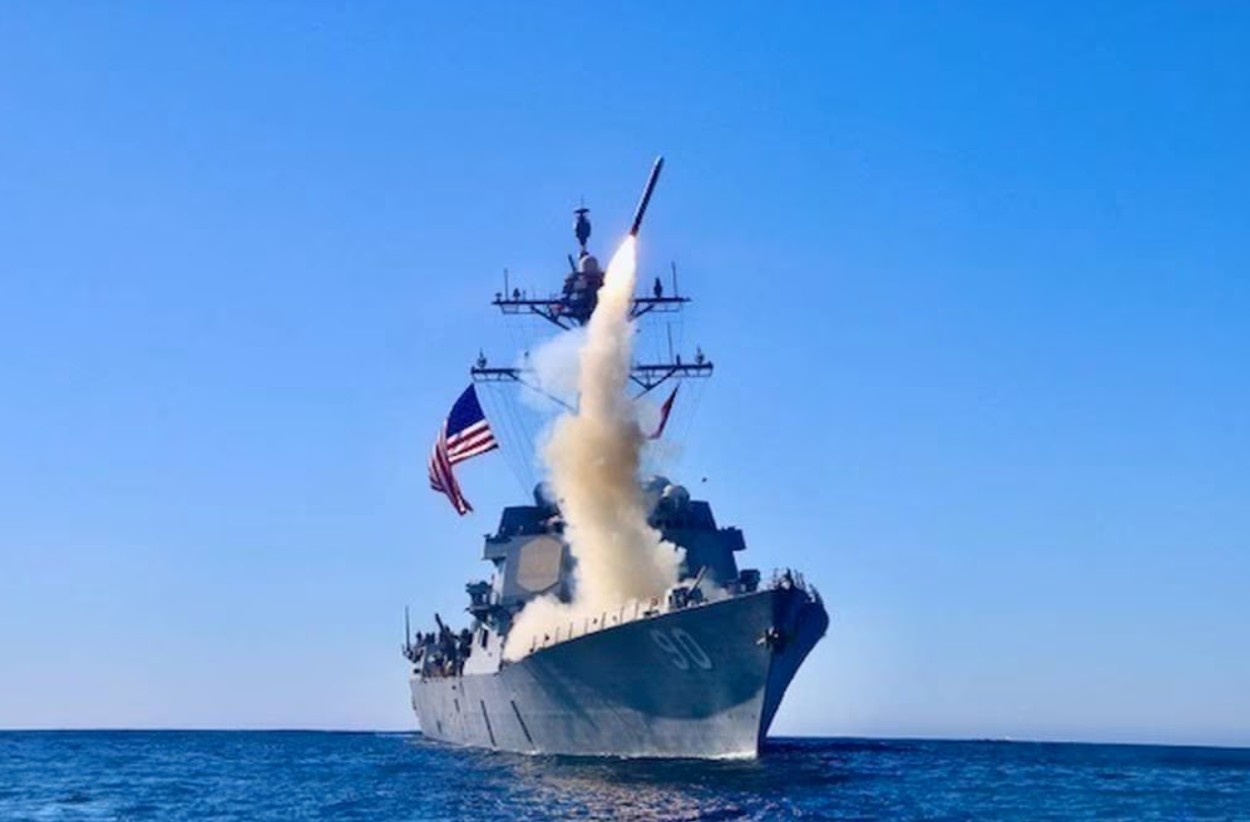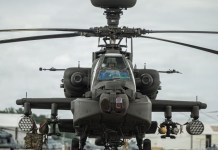As negotiations to end the Russia-Ukraine war intensify under the Trump administration, the United States is weighing the transfer of advanced Tomahawk cruise missiles to Kyiv as a key security guarantee, should a peace agreement be reached.
This move, reported by The Washington Post on November 23, 2025, citing U.S. officials familiar with the talks, aims to address perceived shortcomings in the current U.S.-backed proposal.
The consideration comes amid a tight deadline—set by President Donald Trump for Ukraine to accept a 28-point peace framework by November 27—and ongoing multilateral discussions in Geneva involving U.S., Ukrainian, and European representatives.
The 28-point plan, drafted over the past month by U.S. Secretary of State Marco Rubio and special envoy Steve Witkoff, has drawn sharp criticism from Kyiv and its European allies for favoring Moscow’s demands.
28-Point Peace Plan
1. Ukraine’s sovereignty will be confirmed.
2. A comprehensive non-aggression agreement will be concluded between Russia, Ukraine and Europe. All ambiguities of the last 30 years will be considered settled.
3. It is expected that Russia will not invade neighbouring countries, and NATO will not expand further.
4. A dialogue will be held between Russia and NATO, mediated by the United States, to resolve all security issues and create conditions for de-escalation to ensure global security and increase opportunities for cooperation and future economic development.
5. Ukraine will receive reliable security guarantees.
6. The size of the Ukrainian Armed Forces will be limited to 600,000 personnel.
7. Ukraine agrees to enshrine in its constitution that it will not join NATO, and NATO agrees to include in its statutes a provision that Ukraine will not be admitted in the future.
8. NATO agrees not to station troops in Ukraine.
9. European fighter jets will be stationed in Poland.
10. US guarantee:
The US will receive compensation for the guarantee. – If Ukraine invades Russia, it will lose the guarantee. – If Russia invades Ukraine, in addition to a decisive coordinated military response, all global sanctions will be reinstated, recognition of the new territory and all other benefits of this deal will be revoked. – If Ukraine launches a missile at Moscow or St. Petersburg without cause, the security guarantee will be deemed invalid.
11. Ukraine is eligible for EU membership and will receive short-term preferential access to the European market while this issue is being considered.
12. A powerful global package of measures to rebuild Ukraine, including but not limited to: a. The creation of a Ukraine Development Fund to invest in fast-growing industries, including technology, data centres, and artificial intelligence.
b. The United States will cooperate with Ukraine to jointly rebuild, develop, modernise, and operate Ukraine’s gas infrastructure, including pipelines and storage facilities.
c. Joint efforts to rehabilitate war-affected areas for the restoration, reconstruction, and modernisation of cities and residential areas.
d. Infrastructure development.
e. Extraction of minerals and natural resources.
f. The World Bank will develop a special financing package to accelerate these efforts.
13. Russia will be reintegrated into the global economy:
a. The lifting of sanctions will be discussed and agreed upon in stages and on a case-by-case basis.
b. The United States will enter into a long-term economic cooperation agreement for mutual development in the areas of energy, natural resources, infrastructure, artificial intelligence, data centres, rare earth metal extraction projects in the Arctic, and other mutually beneficial corporate opportunities.
c. Russia will be invited to rejoin the G8.
14. Frozen funds will be used as follows: $100 billion in frozen Russian assets will be invested in US-led efforts to rebuild and invest in Ukraine. The US will receive 50% of the profits from this venture. Europe will add $100 billion to increase the amount of investment available for Ukraine’s reconstruction. Frozen European funds will be unfrozen.
The remaining frozen Russian funds will be invested in a separate US-Russian investment vehicle that will implement joint projects in specific areas. This fund will be aimed at strengthening relations and increasing common interests to create a strong incentive not to return to conflict.
15. A joint American-Russian working group on security issues will be established to promote and ensure compliance with all provisions of this agreement.
16. Russia will enshrine in law its policy of non-aggression towards Europe and Ukraine.
17. The United States and Russia will agree to extend the validity of treaties on the non-proliferation and control of nuclear weapons, including the START I Treaty.
18. Ukraine agrees to be a non-nuclear state in accordance with the Treaty on the Non-Proliferation of Nuclear Weapons.
19. The Zaporizhzhya Nuclear Power Plant will be launched under the supervision of the IAEA, and the electricity produced will be distributed equally between Russia and Ukraine — 50:50.
20. Both countries undertake to implement educational programmes in schools and society aimed at promoting understanding and tolerance of different cultures and eliminating racism and prejudice:
a. Ukraine will adopt EU rules on religious tolerance and the protection of linguistic minorities.
b. Both countries will agree to abolish all discriminatory measures and guarantee the rights of Ukrainian and Russian media and education.
c. All Nazi ideology and activities must be rejected and prohibited.
21. Territories:
a. Crimea, Luhansk, and Donetsk will be recognised as de facto Russian, including by the United States.
b. Kherson and Zaporizhzhia will be frozen along the line of contact, which will mean de facto recognition along the line of contact.
c. Russia will relinquish other agreed territories it controls outside the five regions.
d. Ukrainian forces will withdraw from the part of Donetsk Oblast that they currently control, and this withdrawal zone will be considered a neutral demilitarised buffer zone, internationally recognised as territory belonging to the Russian Federation. Russian forces will not enter this demilitarised zone.
22. After agreeing on future territorial arrangements, both the Russian Federation and Ukraine undertake not to change these arrangements by force. Any security guarantees will not apply in the event of a breach of this commitment.
23. Russia will not prevent Ukraine from using the Dnieper River for commercial activities, and agreements will be reached on the free transport of grain across the Black Sea.
24. A humanitarian committee will be established to resolve outstanding issues:
a. All remaining prisoners and bodies will be exchanged on an ‘all for all’ basis.
b. All civilian detainees and hostages will be returned, including children.
c. A family reunification programme will be implemented.
d. Measures will be taken to alleviate the suffering of conflict victims.
25. Ukraine will hold elections in 100 days.
26. All parties involved in this conflict will receive full amnesty for their actions during the war and agree not to make any claims or consider any complaints in the future.
27. This agreement will be legally binding. Its implementation will be monitored and guaranteed by the Peace Council, headed by President Donald J. Trump. Sanctions will be imposed for violations.
28. Once all parties agree to this memorandum, the ceasefire will take effect immediately after both sides retreat to the agreed-upon points to begin implementation of the agreement.
Ukraine Unhappy
Ukrainian President Volodymyr Zelenskiy has described the proposal as risking “the loss of dignity and freedom,” while European leaders, including French Foreign Minister Jean-Noël Barrot, have warned that peace cannot equate to “capitulation.”
In response to these concerns, U.S. officials are open to revisions. One contentious provision limits Ukraine’s Armed Forces to 600,000 active personnel—a reduction from the estimated 880,000 as of January 2025.
This cap, intended to assuage Russian security fears, has sparked domestic protests in Ukraine, where military leaders argue it would undermine postwar readiness. Trump administration sources told The Washington Post that the limit could be raised or eliminated entirely to make the guarantees “more credible.”

At the heart of the proposed enhancements is the potential supply of Tomahawk Land Attack Missiles (TLAM), long-range subsonic cruise missiles primarily used by the U.S. Navy.
According to official specifications from the Naval Air Systems Command (NAVAIR), the Tomahawk Block IV variant— the most advanced in active service—measures 20.3 feet in length, has a 21-inch diameter, and weighs approximately 3,330 pounds at launch, including its rocket motor.
It boasts a range exceeding 900 nautical miles (about 1,000 miles or 1,600 kilometers), enabling strikes deep into enemy territory from ship or submarine platforms, with a 1,000-pound unitary warhead for blast and fragmentation effects.
U.S. officials view the Tomahawks as a “bolster” to postwar deterrence, serving as an alternative to deploying European peacekeeping forces in Ukraine. Transfers would occur only after a ceasefire, with strict assurances that Kyiv would not launch preemptive strikes into Russia, lest it forfeit U.S. and allied support.
This aligns with broader U.S. policy under Trump, who in September 2025 deferred a direct sale request from Zelenskiy but signaled openness to long-range defensive systems.
By opting for armaments over troop deployments, Washington avoids escalating NATO-Russia tensions while providing Kyiv with asymmetric deterrence—capable of reaching Moscow from western Ukraine without forward basing.
Tomahawk transfers (estimated at $2-3 million per unit) would require U.S. congressional approval and training, potentially delaying delivery until 2026. European allies, gathering in Geneva, are pushing for sweeter terms, including phased sanctions relief for Russia tied to verifiable withdrawals.
As Trump clarified on November 22, the plan is “not my final offer,” leaving room for compromise.
By ET Online Desk with AFP Inputs




